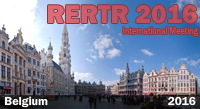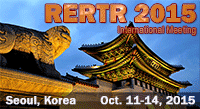Abstracts and Available Papers Presented at the
1999 International RERTR Meeting
Melt-Dilute Treatment of Spent Nuclear Fuel Assemblies from Research and Test Reactors
By
H. B.
Peacock, T. M. Adams, A. J. Duncan, and N. C. Iyer
Westinghouse Savannah River
Technology Center, Aiken, South Carolina, 29802-0616
Abstract
The Savannah River Site is the U.S. Department of Energy’s preferred site for return and treatment of all aluminum-base, spent, research and test reactor fuel assemblies. There are over 20,000 spent fuel assemblies now stored in different countries around the world, and by 2035 many will be returned to SRS for treatment and interim storage, in preparation for disposal in a geologic repository.
The early fuel assemblies for research and test reactors were made using aluminum clad plates that were fabricated from highly enriched (93%) uranium-aluminum alloy. Later, powder metallurgical fabrication methods were developed to produce plate fuels with higher uranium contents using either uranium aluminide, uranium oxide or uranium silicide powders mixed with aluminum. Silicide fuel elements generally are fabricated with low enriched uranium containing less than 20% 235U. Following irradiation, the spent fuel assemblies are discharged from the reactor, and most assemblies have been stored in under-water pools, some since the early 1950’s.
A number of disposition options including direct/co-disposal and melt-dilute treatment were evaluated recently. The melt-dilute technique was identified as the preferred method for treatment of aluminum-base spent fuel. The technique consists of melting the spent fuel assembly and adding depleted uranium to the melt for isotopic dilution to <20% 235U. Aluminum is added, if necessary, to produce a predetermined alloy composition. Additionally, neutron poisons may be added to the melt where they form solid solution phases or compounds with uranium and/or aluminum. Lowering the enrichment reduces both criticality and proliferation concerns for storage. Consolidation by melting also reduces the number of storage canisters.
Laboratory and small-scale process demonstration using irradiated fuel is underway. Tests of the off gas absorption system have been initiated using both surrogate and irradiated RERTR mini fuel plates. An experimental L-Area facility (LEF) is planned to validate induction furnace operations, remote handling, and the off gas system for trapping volatile elements under plant operating conditions. Results from laboratory tests and the small-scale process studies are discussed.
![]() PDF version available
PDF version available
DOWNLOAD full paper in PDF format.
Contact:
Harold B.
Peacock
Advisory
Engineer
Savannah
River Technology Center
Westinghouse
Savannah River Company
Bldg. 773-A
Aiken, SC
29808 USA
Phone: (803) 725-1277
Fax: (803) 185-7369
E-mail: [email protected]




